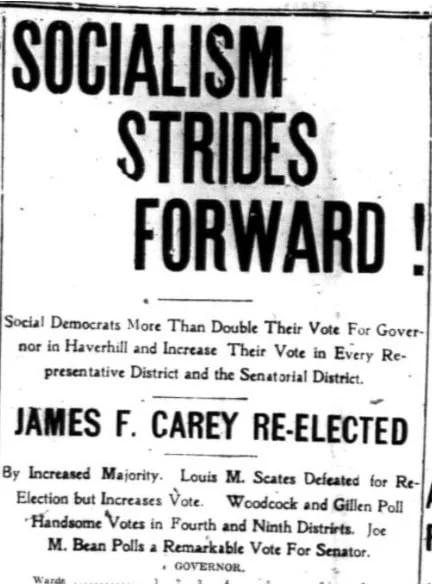Haverhill’s socialist experiment
Text excerpted from Historic New England
The 1890s were turbulent years in New England—and Haverhill, Massachusetts, was no exception. Following the financial panic of 1893, the ‘Queen Slipper City’ quickly felt the effects of the national economic decline.
“At that time, Haverhill’s booming factories produced ten percent of the country’s shoes, employing a workforce of over 11,000 men and women engaged in cutting, stitching, lasting, trimming, and packing at over 230 factories. When the economy struggled, however, consumer demand for shoes decreased. An unexpected increase in the cost of leather cut further into profit margins, and employers quickly turned to several austerity measures to recoup their losses. They initiated a wave of lockouts, firings, and unfair ‘ironclad’ contracts while allowing working conditions to decline, leading to a massive general strike in 1895 in which over 3,000 shoe workers left the factories in protest.
“The strike was a warning for the local government. Haverhill’s workers wanted more for themselves and their families. They wanted better alignment with national unions, and they wanted the local government to recognize their needs more responsively.’’

